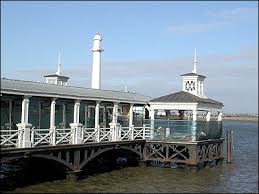32
Liddiard, Herod T.
Place of Birth: London
Date of enlistment: 4 December 1872
Age given at enlistment: 21
Rank: Private
Company: E
Location on 25 June 1876: Pack train escort and hilltop fight
32
Place of Birth: London
Date of enlistment: 4 December 1872
Age given at enlistment: 21
Rank: Private
Company: E
Location on 25 June 1876: Pack train escort and hilltop fight
![Rodborough Church [2]](https://www.menwithcuster.com/wp-content/uploads/2014/05/Rodborough-Church-2.jpg)
St. Mary Magdalene, Rodborough, as it would have appeared during Herod Liddiard's time. Illustration from 'Rodborough and its Parish Church,' by Rev. L. V. Miller, published in 1933. Thanks to Julie Mountain, Chair of the 'Remembering Rodborough Project,' for submitting this image - see footnote 3.

Extract taken from Census (1871) for Gloucester County Prison, Kingsholm, Gloucestershire.

The much-restored Gravesend Pier was built in 1834 and is the oldest cast iron pier in the world. William Crisfield sailed to America from here on 22 January 1851. (Author's collection)

Extract taken from the 'New York, Passenger Lists, 1820-1957, index entry for W. J. (sic) Liddiard' - S.S. Virginia, which arrived in New York on 15 November 1871. Although the first initial 'H' could possibly be mistaken for a 'W,' the second initial is clearly a 'T' when compared with first letter of 'Thomas (Sharpe),' see three lines below.
![Herod Liddiard [Enlistment]](https://www.menwithcuster.com/wp-content/uploads/2015/11/Herod-Liddiard-Enlistment.jpg)
Oath of Enlistment and Allegiance signed by Herod T. Liddiard, at Troy, NY, 4 December 1872.


















Comments:
According to the Census of England & Wales (1861 & 1871) Herod Thomas Liddiard was born in Rodborough, Gloucestershire, not London as he stated on enlistment, and freely quoted elsewhere. His actual date of birth has yet to be established.